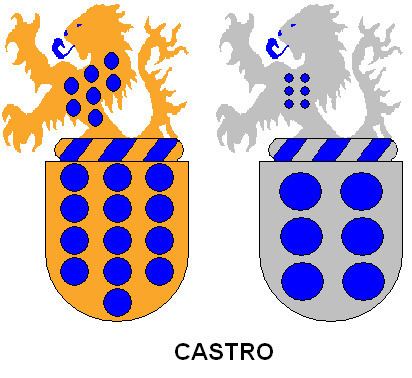 | ||
The House of Castro is believed to have had its origins in Castile, the name deriving from the town of Castrogeriz (Province of Burgos), and had deep branches in Galicia.
The first clearly identified member of the family was early-12th century count Fernando García de Hita, a kinsman and vassal of Urraca of León and Castile. This kinship, along with his patronymic, have led to him being considered illegitimate son of Urraca's uncle García II of Galicia. More recently, it has been suggested that he was the son of count García Ordóñez by the infanta Urraca Garcés of Navarre, and perhaps scion of the Banu Gómez clan.
During the reign of Alfonso VIII, the Castro family, under Gutierrez Fernandez, rivaled another major Castilian family, the House of Lara, for power in the kingdom of Castile.
The lack of heirs in the senior line resulted in the rise of a cadet branch seated in Galicia. This branch became the most powerful of the Galician nobility, and one of the most powerful in Spain. Traditionally linked to the county of Lemos, the most illustrious representatives were the "Great Count of Lemos" and his uncle, Cardinal Rodrigo de Castro Osorio. Another scion, Pedro Antonio Fernández de Castro is still well remembered in Peru.
The House of Castro went into decline because of their lack of offspring, with the county of Lemos passing to the House of Alba. The coat of the Galician branch of the House of Castro were six blue roundels on a silver field. The Portuguese branch used a variant that included thirteen roundels on gold.
